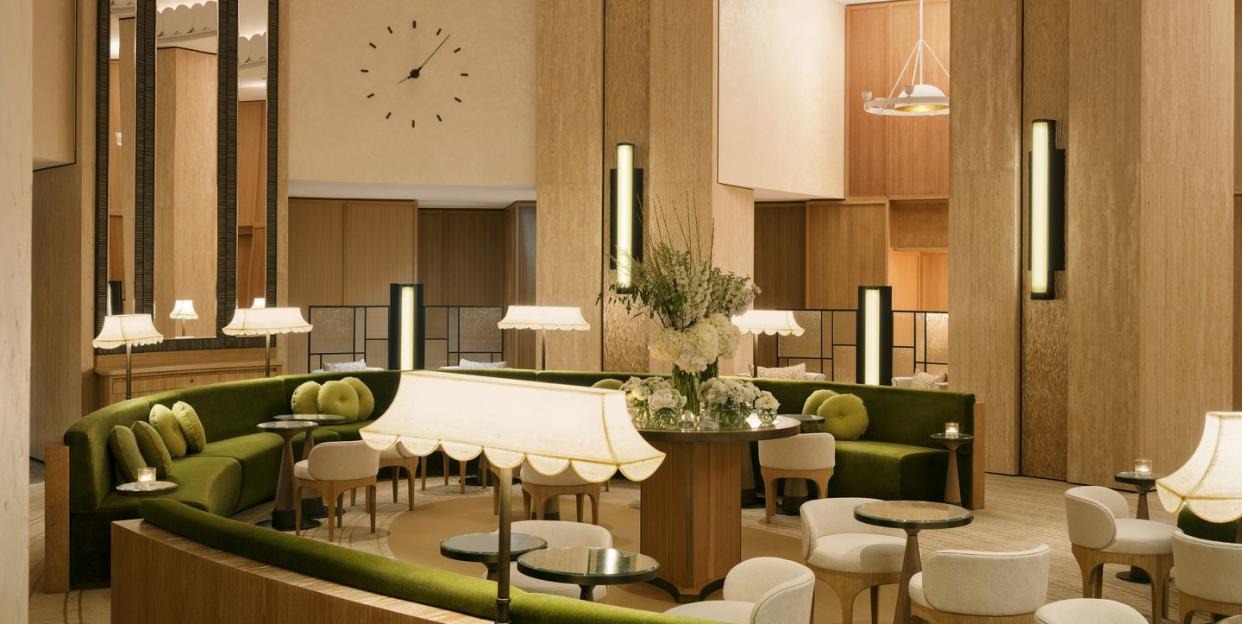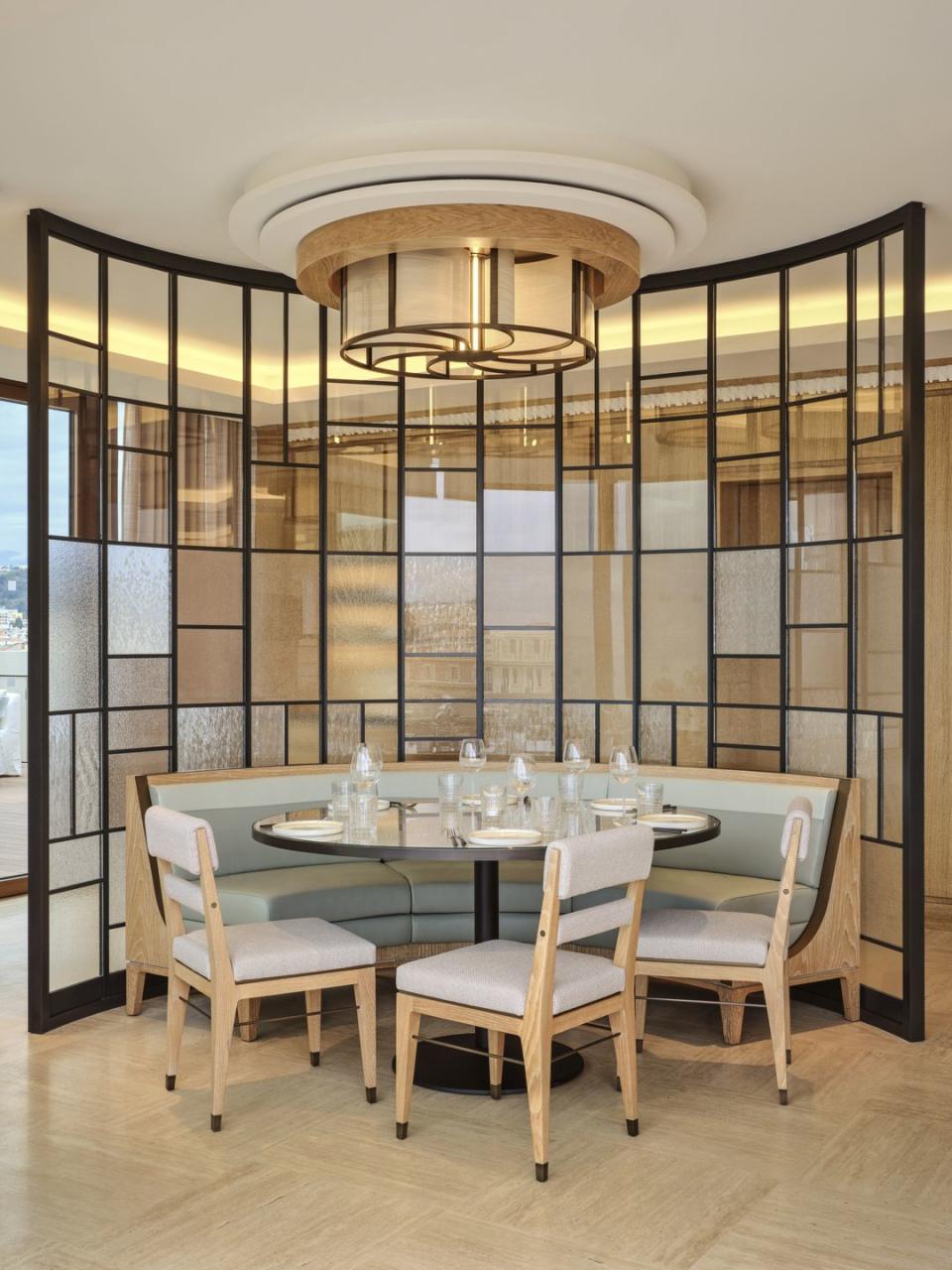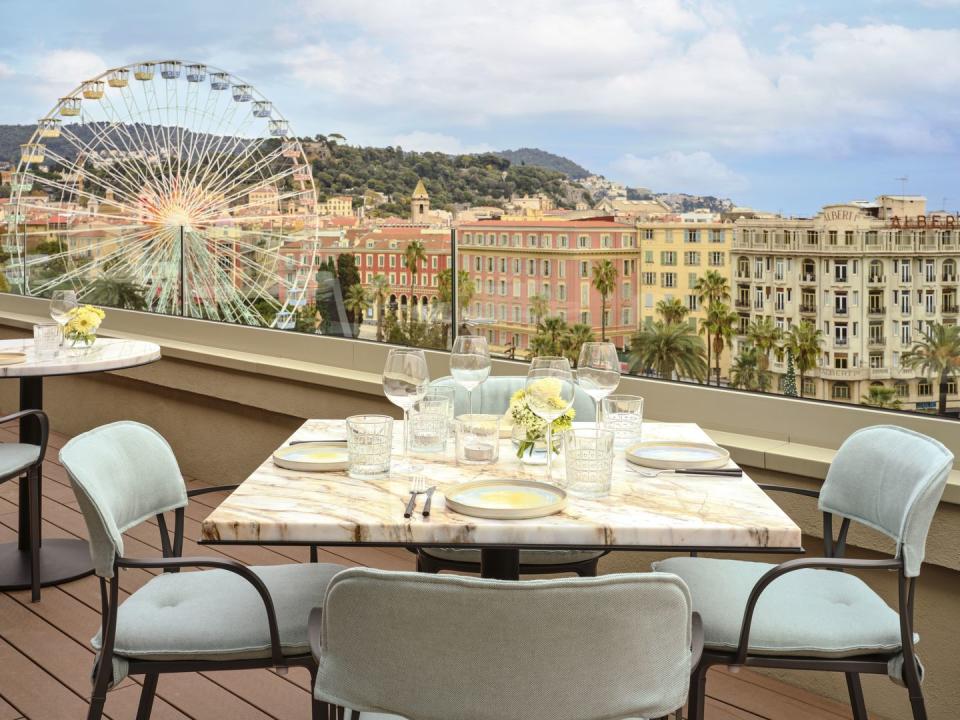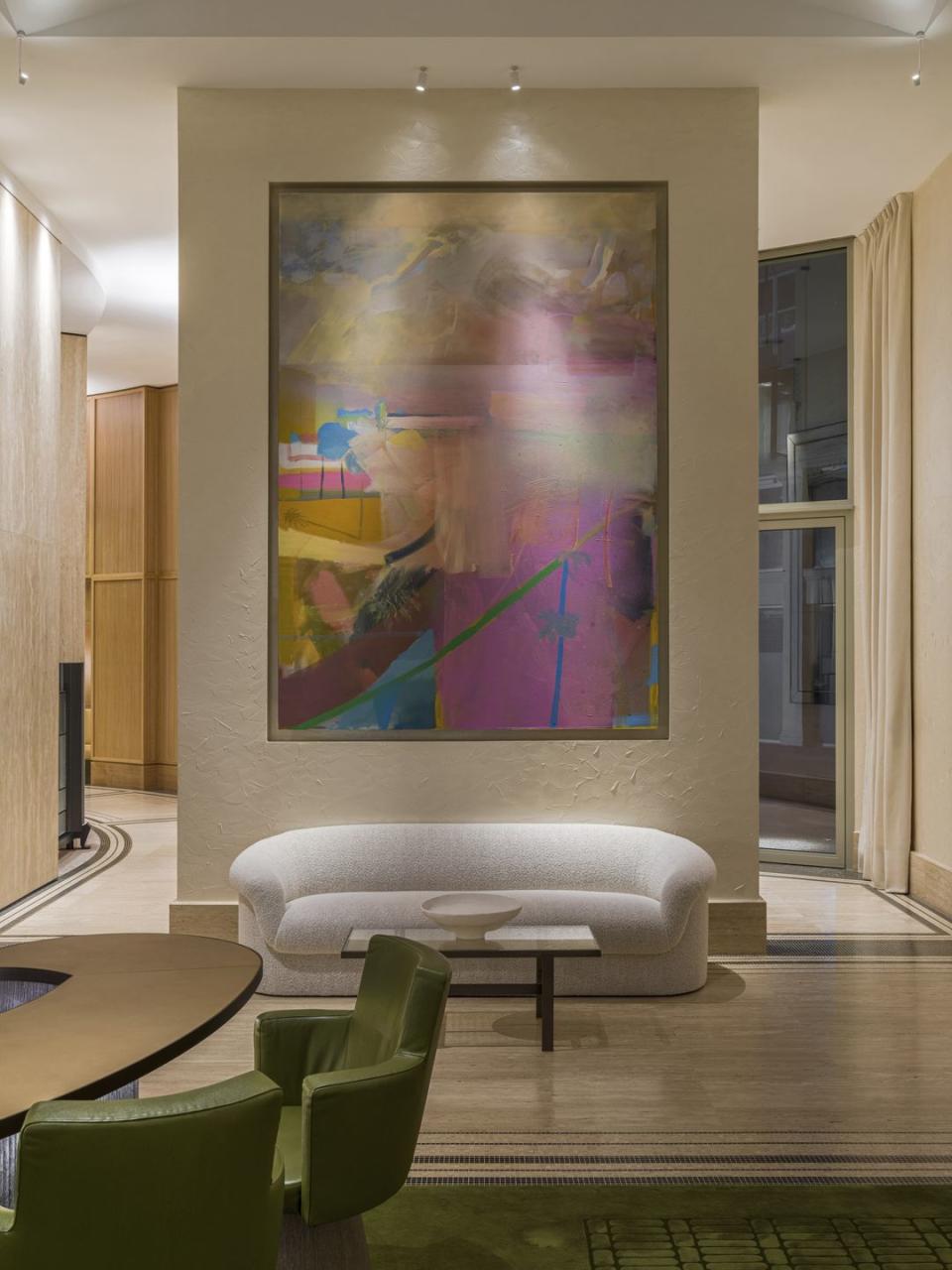David Collins Studio reveal the secrets of its Anantara Plaza Nice Hotel redesign

Set in the heart of the French Riviera with sweeping views over the Promenade des Anglais and the glittering waters of the Baie des Anges, the Anantara Plaza Nice Hotel is a handsome property that dates back to the Belle Epoque era. For decades this glamorous stretch of the Cote d’Azure has fired the imaginations of artists, writers and creatives, so it made sense that when David Collins Studio was tasked with the redesign of the landmark hotel, the team looked to its iconic locale as a source of inspiration.
‘When I first visited I was blown away by the setting, which is quite magical,’ enthuses Chief Creative Officer Simon Rawlings. ‘The Plaza is a grand old hotel that locals have a real connection with, so we wanted to respect the building, its façade and its lofty spaces. But it was also important to avoid putting back something stuffy. It needed to be fresher, more contemporary and more suited to the modern traveller.’

Charged with reimagining the hotel entrance, the reception, the lobby lounge and the rooftop restaurant, bar and terrace, all of which had been stripped back to a shell, the team created an elegant architectural framework using Stucco plaster, limed oak, travertine and marble mosaic. These refined materials serve as a foil for custom furniture, lighting and objects that with their organic shapes take their cue from the boats, waves and shells found at the waterfront spot. ‘The aim was to create a luxury experience without the obvious frills,’ says Simon. ‘So we almost took a reverse approach - the simplicity demands quality.’
A defining element in these public areas is commissioned art, and nowhere is it more intrinsic to the design than in the reception area where the pearlescent textured walls are home to several unique works. ‘The idea was to make some very big statements and from the start it was embedded in my mind that the calmness would be punctuated by some really strong pieces,’ says Simon. ‘For me, the art is part of the conceptual process, otherwise it becomes more gallery-like, which is fine, but it wasn’t the approach we wanted here.’

Instead, Rawlings’ vision was to create abstract ‘windows’ on to the outside world with a pair of large-scale paintings. ‘I thought, how can we redeliver the emotion you get from wild seas, skies and landscapes in a way that’s unexpected and different? Something that would wrap you up in a whirlwind of sensations.’
The answer was to commission Cornish artist Saul Cathcart, whose work he had first admired at a gallery in St Ives. ‘I saw Saul’s paintings at a group show and I was completely enthralled by the intensity that he was able to capture on a canvas,’ says Simon. ‘The passion I envisaged wasn’t something that could come from photographs or even a true life representation. Instead it called for something intense and colourful and with that in mind, it was important to work with someone we could really trust, who we knew could create the level of drama that we were hoping for.’

The journey to the finished works was a long one, as thanks to COVID restrictions, Saul was unable to paint the vistas Simon imagined directly from the landscape; a process known as en plein air. ‘Simon talks about emotion and that’s really is a big thing for me. I wanted the paintings to be exciting and energetic because that's the feeling Nice gives,’ he says. ‘Even though I wasn’t able to paint en plein air, I went over and made lots of sketches. It’s almost the experience that matters more, so it was very important to go out and get a sense of the space. Afterwards I put great trust in my subconscious mind and just allow it to come out.’
The result is a dynamic pair of acrylic paintings that represent views towards the lively park and the turquoise sea, and in the opposite direction over the rugged mountains. ‘The park is packed with people, fountains and public art so there are all of these pops of colour,’ says Saul. ‘When I visited, the sun was setting so there was an intensity which brought out pinks on the buildings. There are so many shades and textures and so the paintings are very nuanced and layered, which is something David Collins Studio does with its interiors too. Then the mountains and the rooftops create another amazing vista, which made life easy for me because it was simple to abstract those shapes. It was important to focus the distance you get in both directions. I want the paintings to reward you if you look further into them.’
For Simon, the key element was the horizon. ‘What’s fascinating is when you’re looking towards the park there’s this intense movement, then all of a sudden the sea creates an expanse of calm, almost a pause. After that the sky can sometimes be crazy again,’ he observes. ‘Towards the mountains, the view is broken with trees and buildings and there are different cloud formations, so when you’re in the same spot and you turn 180 degrees, what you're seeing is so incredibly different.’ Now hung opposite each other, the finished works bring movement to the otherwise serene lobby and as with the exterior landscape, the two perspectives can never be viewed at the same time.
This genre of painting is something Saul is dedicated to and with good reason.
‘When you’re a kid, you have this freedom of expression where your analytical mind doesn't step in,’ he says. ‘That’s the kind of feeling this type of work creates. The energy, the sense of space - it just seems to gel for me and I love being out in a landscape. Growing up in the countryside, I was always surrounded by nature so I’m very at ease. I know I can push things because I’m comfortable with the subject. The excitement is always there and I really feel I’m part of it.’ davidcollins.studio


